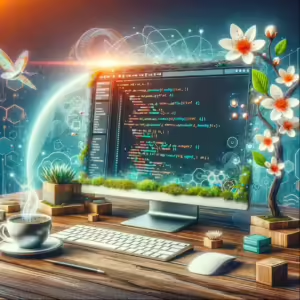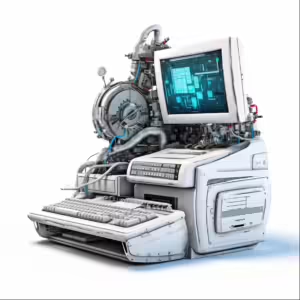Computer vision: teaching machines to see
Computer vision, a fascinating and rapidly growing field of artificial intelligence (AI), deals with the ability of computers to extract and interpret information from visual data. From recognizing objects in images to analyzing complex scenes in videos, computer vision plays a crucial role in many modern technologies. This article provides an overview of the fundamentals, applications and challenges of computer vision.
What is Computer Vision?
Computer vision is a field of computer science concerned with enabling computers to “see” and interpret visual information. This includes capturing, processing, analyzing and understanding images or videos and translating that data into useful decisions or actions.
Key aspects of computer vision
- Image processing: The first step in computer vision in which images are processed to highlight features such as edges, contours or colors.
- Object detection: Identification and classification of objects within an image.
- Pattern Recognition: Analyzing images or videos to identify recurring patterns.
- 3D modeling: Creating three-dimensional models from images or videos.
- Motion analysis: Tracking movements in video sequences.
Applications of Computer Vision
- Automated Vehicles: Using computer vision to recognize street signs, pedestrians and other vehicles.
- Facial recognition: Applications in security technology and identity verification.
- Healthcare: From analyzing medical images to assisting with surgical procedures.
- Retail: Use in product monitoring and customer analysis.
- Industrial automation: quality control and process monitoring in manufacturing.
Challenges in Computer Vision
- Data variability: Different lighting conditions, angles and occlusions can affect detection performance.
- Scene complexity: Understanding complex or unstructured environments remains a challenge.
- Scalability: adapting systems to a variety of different applications and environments.
- Privacy and Ethical Concerns: Particularly when it comes to facial recognition and surveillance.
Future of Computer Vision
The future of computer vision looks promising, with continued advances in areas such as deep learning and neural networks. The integration of computer vision into more and more areas of daily life will continue to transform the way we interact, work and live. With increasing computing power and improvements in algorithm development, computer vision systems are becoming increasingly precise and versatile.
Conclusion
Computer vision is a key element in the development of intelligent systems and is already having a significant impact on various industries. The ability to understand and interpret visual data opens up immense opportunities for innovation and improvement in numerous application areas. While challenges such as privacy and ethical concerns remain, computer vision offers exciting opportunities for the future of technology.






